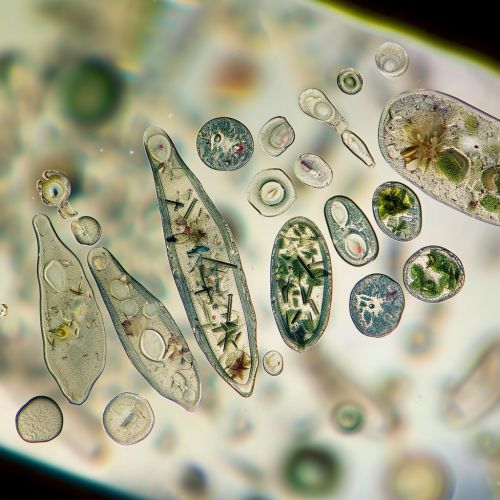Rhizaria
Introduction
Rhizaria is a supergroup of mostly unicellular eukaryotic organisms, a significant part of the Earth's biodiversity. This group was first proposed by Cavalier-Smith in 2002, based on genetic sequencing studies that revealed previously unexpected relationships between different groups of protists. Rhizaria is now recognized as one of the five supergroups of eukaryotes, alongside Excavata, Amoebozoa, Opisthokonta, and Archaeplastida.
Classification and Phylogeny
Rhizaria is a diverse group, and its classification has been the subject of much debate. Initially, these organisms were grouped together based on morphological characteristics, but molecular phylogenetic studies have since revealed a more complex picture. Rhizaria is currently divided into three main subgroups: Cercozoa, Foraminifera, and Radiolaria.


Cercozoa
Cercozoa is the most diverse subgroup within Rhizaria, comprising a wide range of amoeboid and flagellated protists. These organisms are typically found in soil and freshwater environments, but some species are also marine. Cercozoans are characterized by their thread-like pseudopodia, which they use for locomotion and feeding.
Foraminifera
Foraminifera, or forams, are a group of amoeboid protists known for their intricate calcium carbonate shells, or tests. These organisms are predominantly marine and are important contributors to the ocean's carbon cycle. Foraminifera are also valuable in paleoclimatology and biostratigraphy due to their extensive fossil record.
Radiolaria
Radiolaria are marine protists characterized by their intricate silica skeletons. These organisms are found throughout the world's oceans, from the surface to the deep sea. Radiolarians play a crucial role in the marine silica cycle and are significant contributors to marine primary production.
Morphology and Physiology
Rhizarians exhibit a wide range of morphologies, reflecting their diverse ecological roles and evolutionary histories. Despite this diversity, all Rhizaria share a common feature: the presence of thin, hair-like extensions of the cell known as filopodia. These filopodia are used for various functions, including locomotion, feeding, and sensory perception.
Ecology and Distribution
Rhizarians are found in a wide range of environments, from terrestrial to marine, and from the tropics to the poles. They play crucial roles in various ecological processes, including nutrient cycling, primary production, and as part of the food web.
Evolution
The evolutionary history of Rhizaria is complex and still not fully understood. Molecular phylogenetic studies have provided valuable insights into the relationships between different Rhizarian groups, but many questions remain. One of the key challenges in Rhizarian evolution is the lack of a comprehensive fossil record, particularly for the early evolution of the group.
